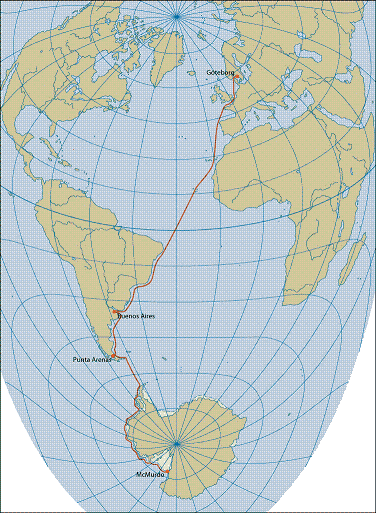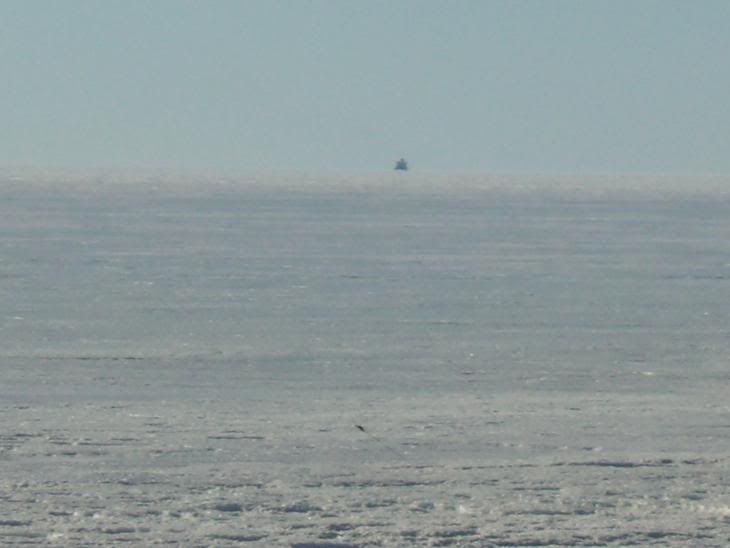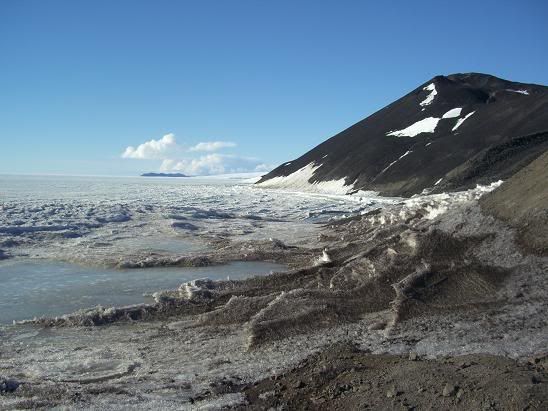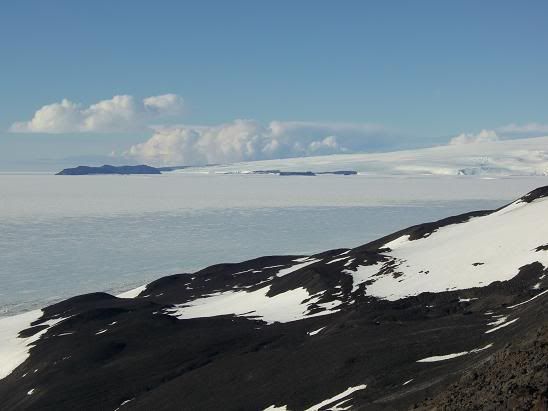Life continues to go smoothly down south. With no more two day weekends to look forward to and the holidays behind us, talk of re-deployment and travel have been the buzz around town. Last week we sat though re-deployment meetings which gave us all of the details including room inspections, bag drag, onward travel and when we would get our last cash allotment from Raytheon once off the ice. During my days of vigorous toilet scrubbing by mind swirls with thoughts of post-ice travel, will I return to the ice next summer, where am I going to travel, do I have enough travel funds? Then I realized, in just a few short weeks, I will no longer be able to knock on my next door neighbor's door and find my "up for anything friends" waiting for me. So, my goal for the next six weeks is to be present here at McMurdo because soon I'll be saying goodbye to something that has been a great experience. The last thing I should do is rush it.
January is an exciting month at McMurdo. Each year a U.S. Coast Guard vessel is contracted by the National Science Foundation to bring enough supplies to McMurdo to last an entire year. An ice breaker, which precedes the vessel, is also contracted by the NSF to break through the winter ice. This year the job was given to the Swedes and their icebreaker "Oden." For the past two weeks we have been able to see Oden from Hut Point Peninsula, a short 15 minute walk from McMurdo. The Oden was built in 1989, weighs 13,000 tonnes, measures 170 meters long and 30 meters wide, can travel 15 knots in open water and can cut through six feet of ice traveling at 3 knots. Not only has the Oden been contracted to break though the ice in the McMurdo sound it also carrys researchers, teachers and other personnel from the U.S., Sweden and Chile. The scientific objectives of the cruise are to collect data in rarely traveled areas of the Antarctic seas and coastline, including the Bellingshausen, Amundsen, and eastern Ross Seas. During the expedition these international science teams along with teachers will continue to monitor wildlife, survey sea ice and meteorological conditions, map chemical and thermal properties of the ocean as well as measure the abundance of plankton and nutrients in the ocean. Here is a map of the Oden's journey from Sweden...

A view of Oden less than two weeks ago...

A little later...

Oden finally made it to McMurdo just yesterday... (with some curious, feathered friends in the foreground!)

Photos from Hut Point...


The Oden will not doc until January 18 when a fresh crew will fly in and switch out with the current crew. Until then, Oden will sweep back and forth through the sound making sure to keep the sea ice open for the incoming vessel. There have been orcas, seals and penguins following Oden during its trip to McMurdo. Hopefully we'll be lucky enough to see some whales close to McMurdo!
The sea ice within the McMurdo sound has not broken up and gone out to sea in seven years. There is hope this year that it may happen as open water is closer to McMurdo than it has been in years. This has brought hundreds of penguins to Hut Point and to the land/ice transition here in town. I'll try and get some more photos to post soon!
Happy New Year!
January is an exciting month at McMurdo. Each year a U.S. Coast Guard vessel is contracted by the National Science Foundation to bring enough supplies to McMurdo to last an entire year. An ice breaker, which precedes the vessel, is also contracted by the NSF to break through the winter ice. This year the job was given to the Swedes and their icebreaker "Oden." For the past two weeks we have been able to see Oden from Hut Point Peninsula, a short 15 minute walk from McMurdo. The Oden was built in 1989, weighs 13,000 tonnes, measures 170 meters long and 30 meters wide, can travel 15 knots in open water and can cut through six feet of ice traveling at 3 knots. Not only has the Oden been contracted to break though the ice in the McMurdo sound it also carrys researchers, teachers and other personnel from the U.S., Sweden and Chile. The scientific objectives of the cruise are to collect data in rarely traveled areas of the Antarctic seas and coastline, including the Bellingshausen, Amundsen, and eastern Ross Seas. During the expedition these international science teams along with teachers will continue to monitor wildlife, survey sea ice and meteorological conditions, map chemical and thermal properties of the ocean as well as measure the abundance of plankton and nutrients in the ocean. Here is a map of the Oden's journey from Sweden...

A view of Oden less than two weeks ago...

A little later...

Oden finally made it to McMurdo just yesterday... (with some curious, feathered friends in the foreground!)

Photos from Hut Point...


The Oden will not doc until January 18 when a fresh crew will fly in and switch out with the current crew. Until then, Oden will sweep back and forth through the sound making sure to keep the sea ice open for the incoming vessel. There have been orcas, seals and penguins following Oden during its trip to McMurdo. Hopefully we'll be lucky enough to see some whales close to McMurdo!
The sea ice within the McMurdo sound has not broken up and gone out to sea in seven years. There is hope this year that it may happen as open water is closer to McMurdo than it has been in years. This has brought hundreds of penguins to Hut Point and to the land/ice transition here in town. I'll try and get some more photos to post soon!
Happy New Year!


0 Comments:
Post a Comment
<< Home